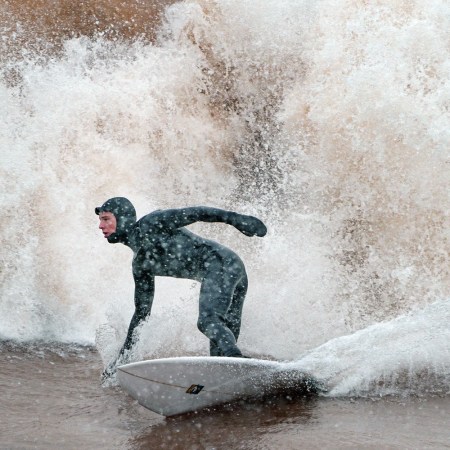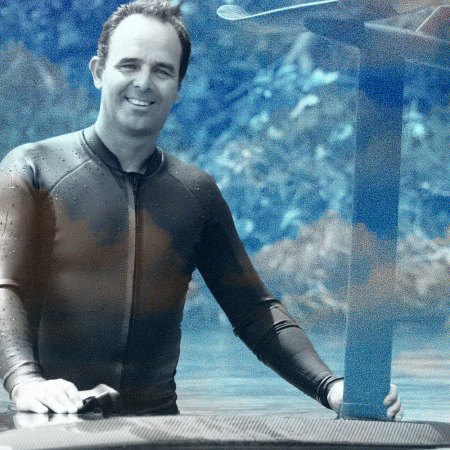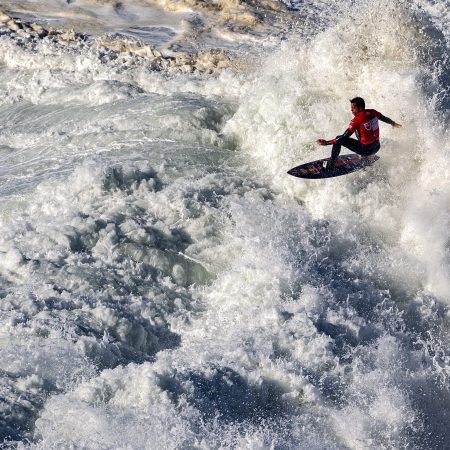If you follow the World Surf League on Instagram, you’ve probably seen a few surfers defy death in Nazaré, Portugal.
Big-wave riders there have been known to catch tubes up to 45 feet high. That’s almost five stories, or taller than most L.A. apartment buildings.
But Venice Beach resident and WSL Big Wave Award Nominee Nic Lamb may soon surpass that — the wave he recently rode may have been up to seven stories.
Nic Lamb at NazaréWatch Nic surf this humongous wave. 0:52
Or, in his words: “It’s like a roller coaster being chased by a saber-toothed tiger.”
On the eve of the WSL Big Wave Awards in Anaheim, we spoke to Lamb about riding Nazaré, how he stays fit and what the rest of us can do to prepare for our white whale.
Spend as much time as possible in the water
“I train for surfing big waves by constantly being out in the water surfing all different size waves.” For big waves he has to leave the city proper, going either north or south for those big daddies. Locally, he likes El Porto in Manhattan Beach, and also recommends any place in the South Bay with a good sandbar. “I am so lucky to live here — there’s so many types of waves along this coast,” he says. “Steamers Lane, Oceanside, Huntington, The Wedge in Newport Beach, Trestles …” The list goes on. But for big wave stuff he heads to north to Mavericks and south to Todos Santos.
Get a badass trainer
“I train with Nick Curson at Speed of Sport to become explosive and build endurance with plyometrics, cardio and some strength and conditioning a few times a week,” says Lamb. When he’s not working with Lamb, Nick Curson trains with UFC, kickboxing and boxing champs.
Always warm up before getting the water
“I like to sprint from my car to the waves. That’s about the extent of my warmup — just to get my heart rate up a bit,” says Lamb. “When I hit the beach, I do some assimilating movements, but nothing over the top.”
Be sure to cool down and stretch afterwards
Save the stretching for post-surf to decrease muscle soreness and release muscle tension. “I do yoga occasionally to mix up my training,” says Lamb.
Start doing deep-breathing exercises
Lamb recommends doing the Wim Hof Method. “It’s helped with hairy situations. When you’re being pummeled under breaking waves, holding your breath for long periods of time is a lifesaver,” says Lamb. “His breathing techniques can be useful when surfing in any types of conditions — would recommend it to anyone.”
Eat paleo
“Whole foods all day, baby. I’ll do a free-range chicken or grass-fed beef coupled with either kale and some sweet potatoes. It’s the perfect balance of protein and veg.”
And always watch the water weather
Use app like Surfline or Magicseaweed, which are “updated frequently and give accurate forecasts for your favorite breaks,” to help you build some knowledge about the local surf. “Ride whatever you can catch for starters, and as you progress, so will your wave selection. Quantity over quality. Get after it!”
Image of El Porto courtesy of Pedro Szekely via Wikimedia Commons
This article was featured in the InsideHook LA newsletter. Sign up now for more from the Southland.





















